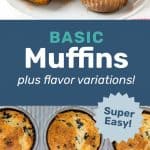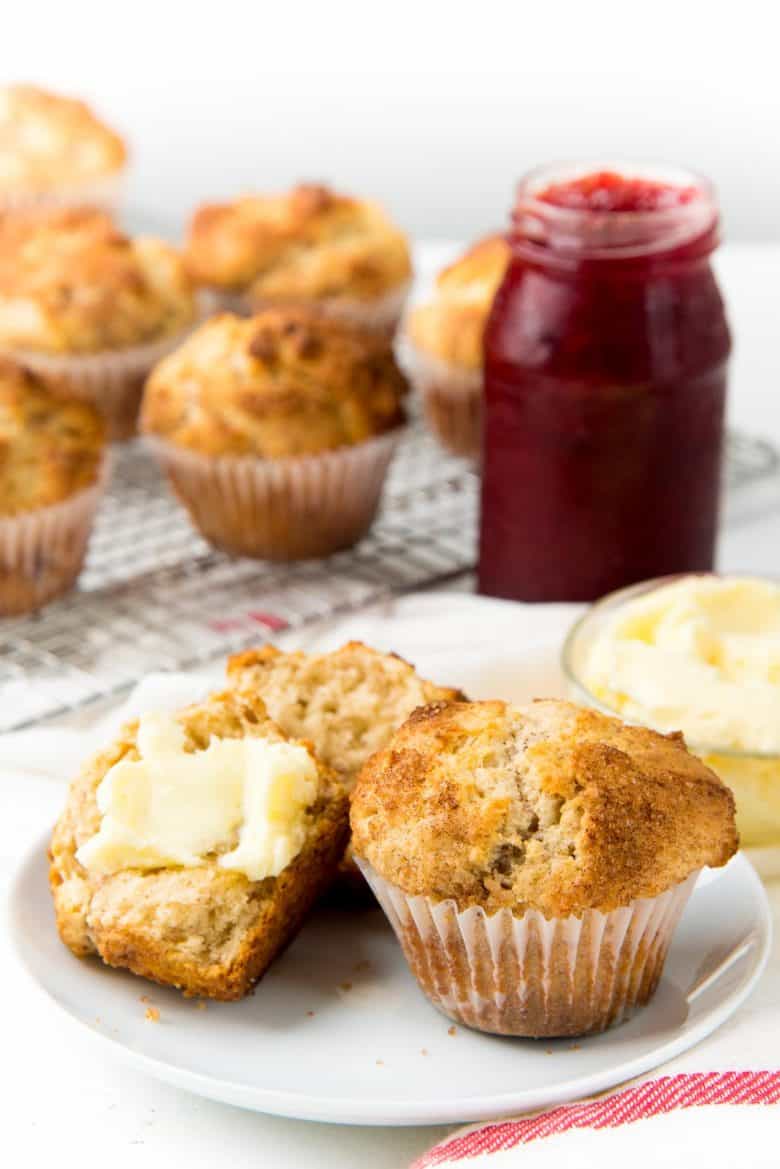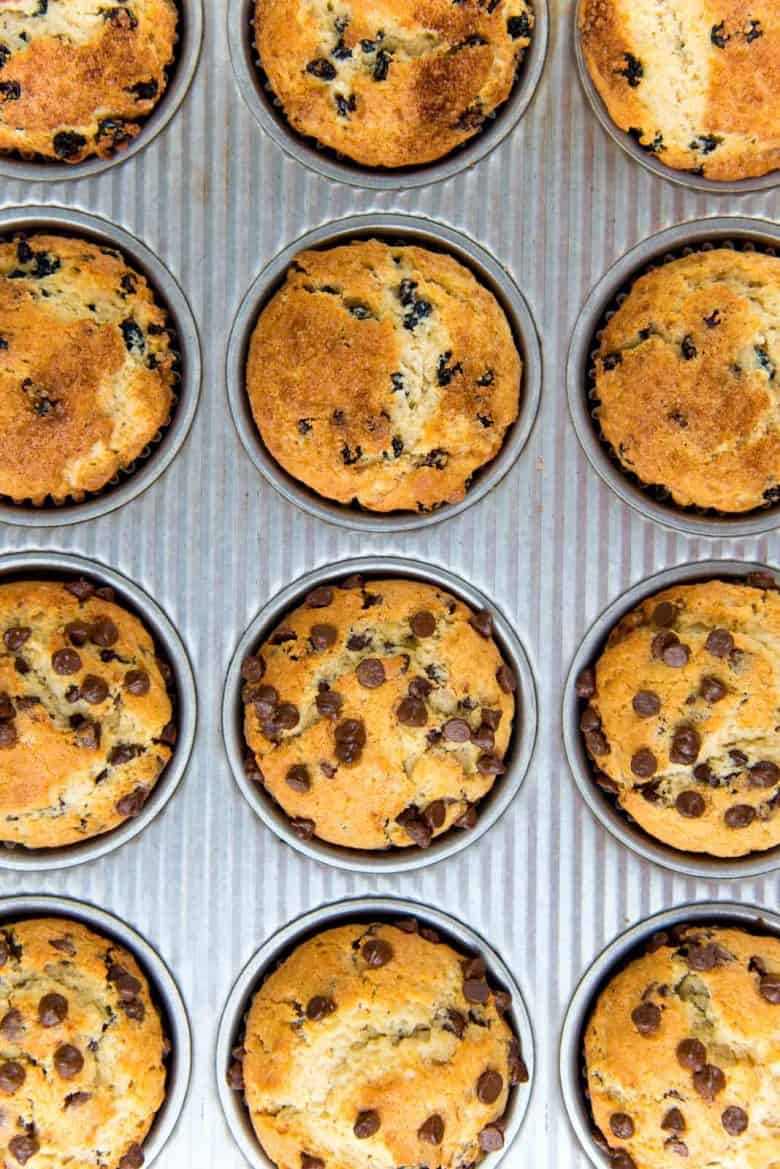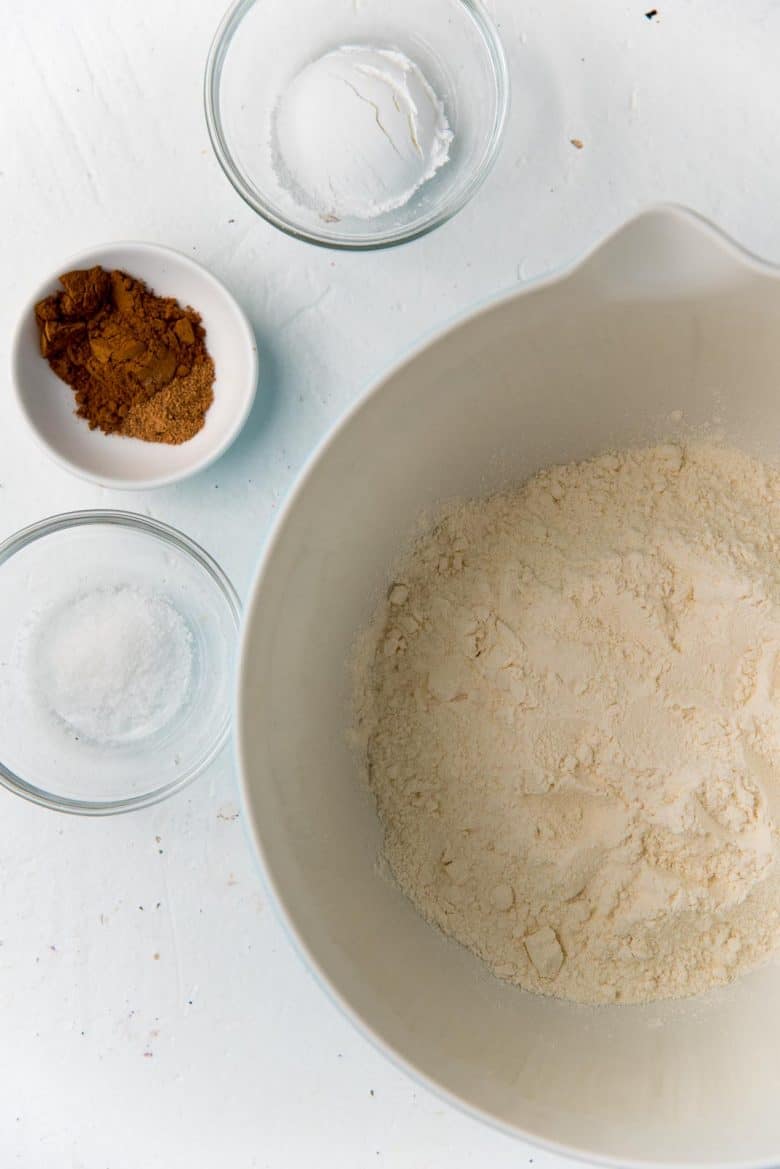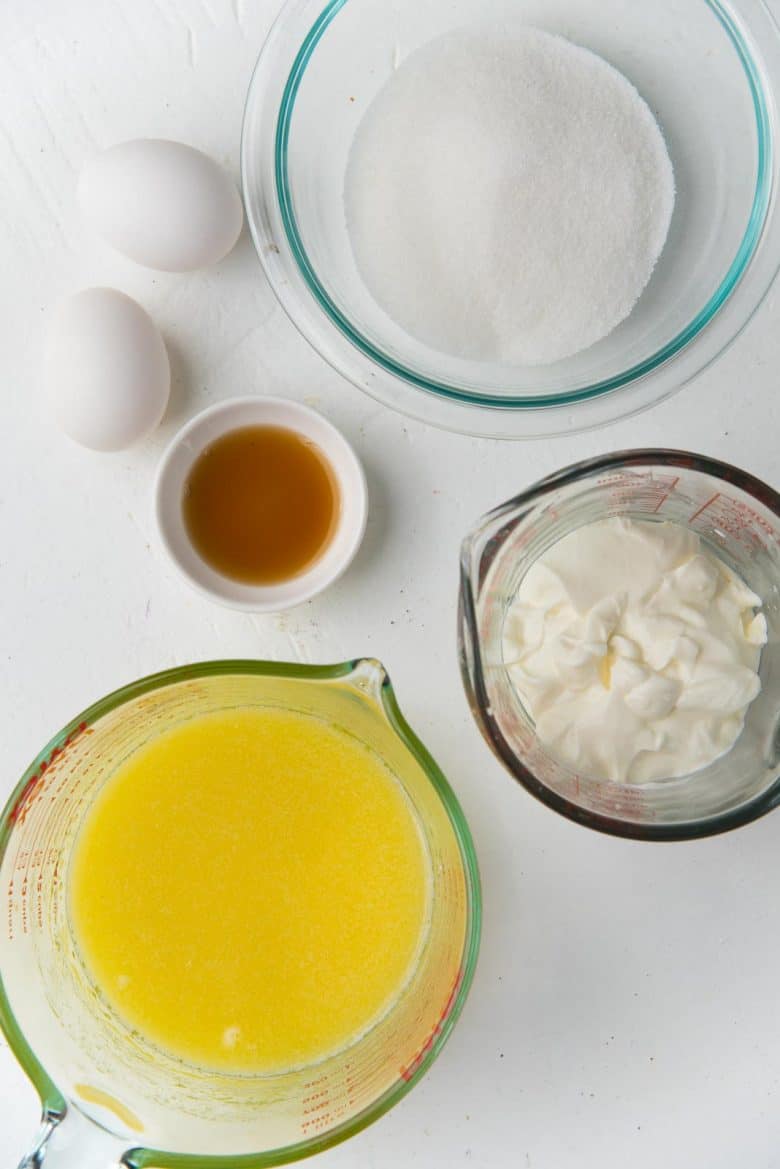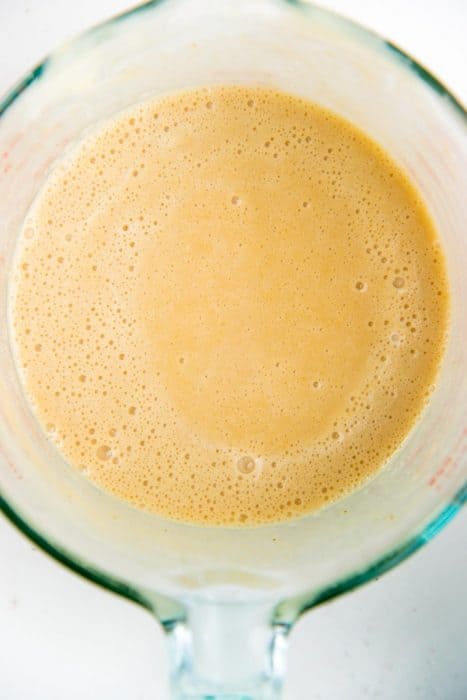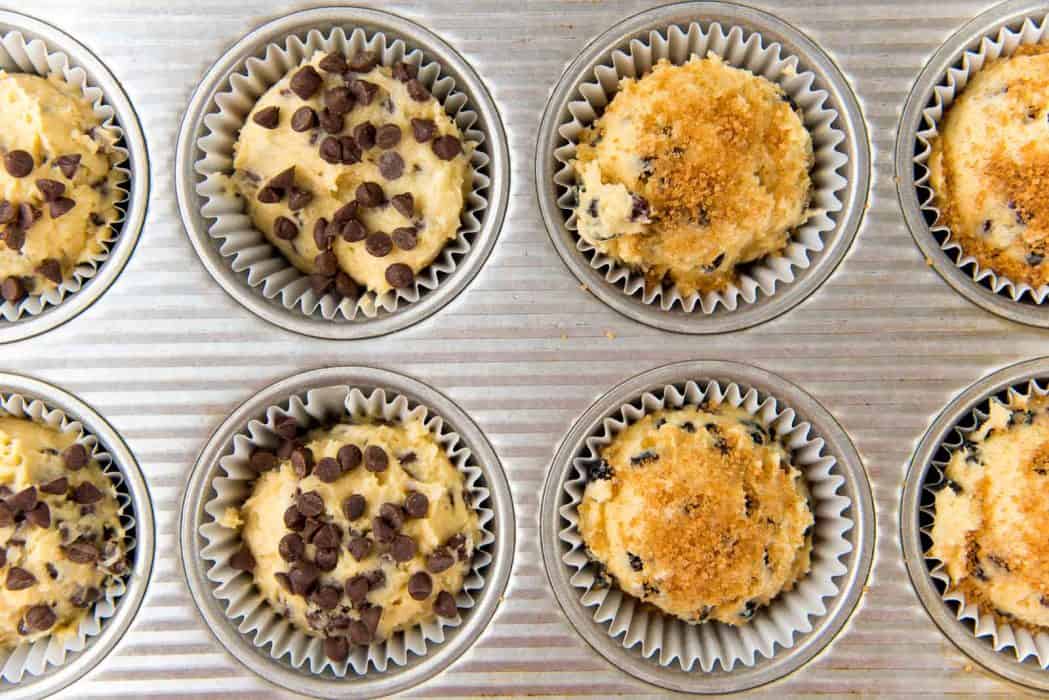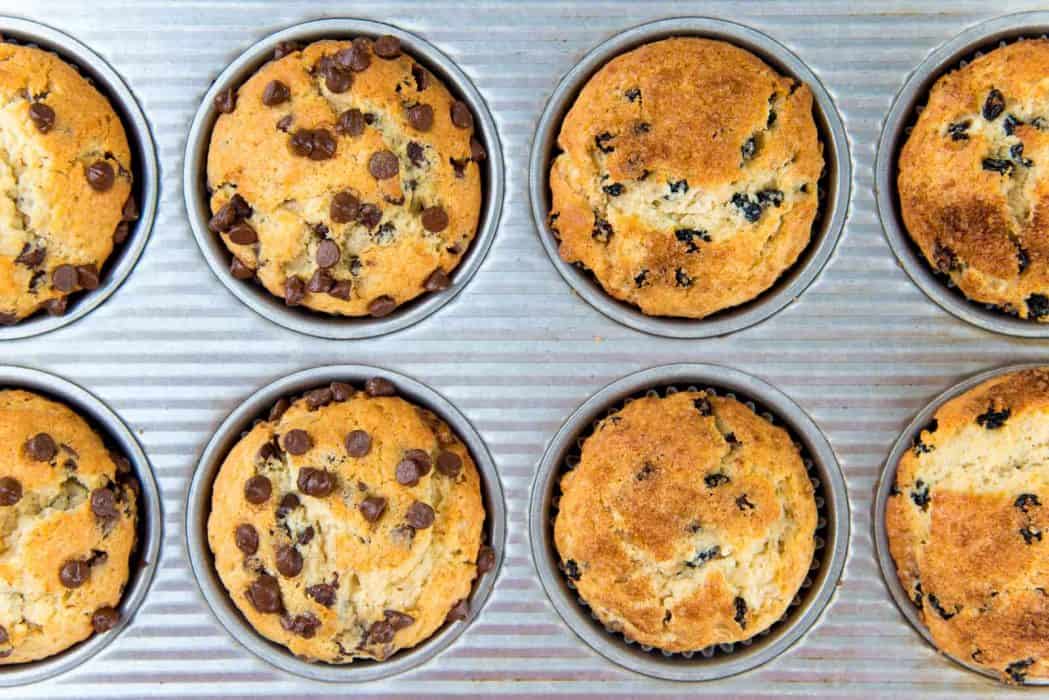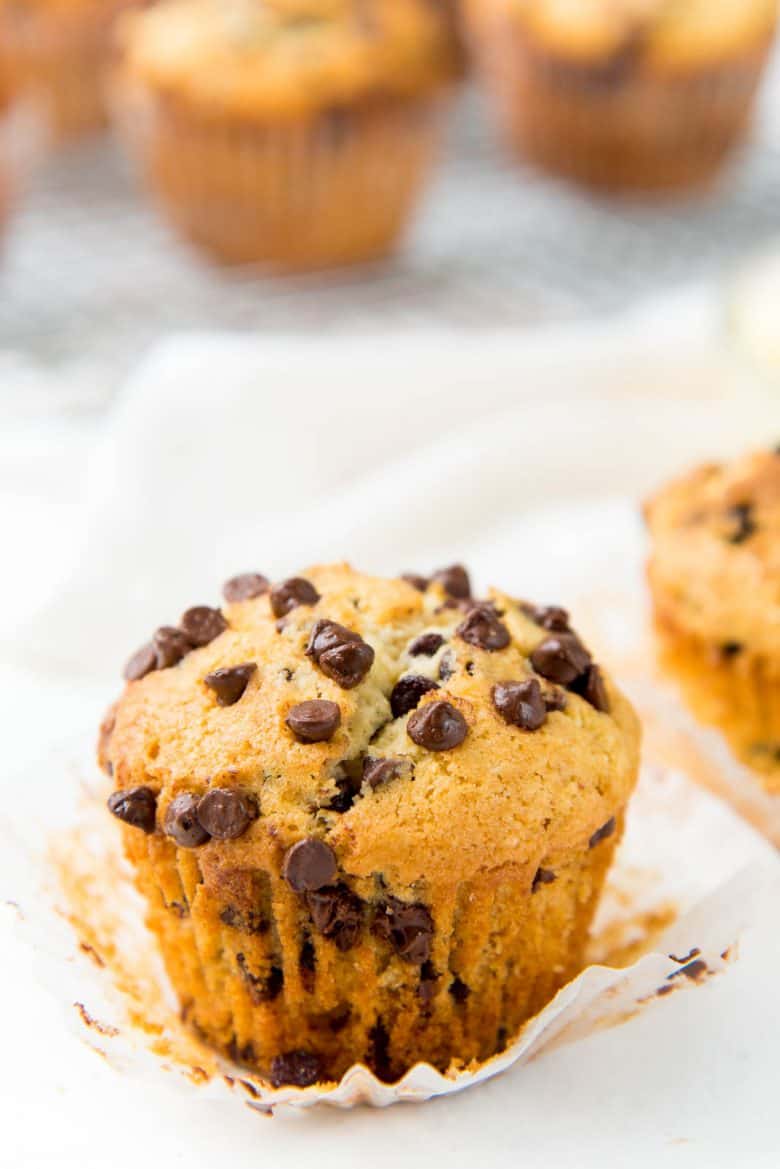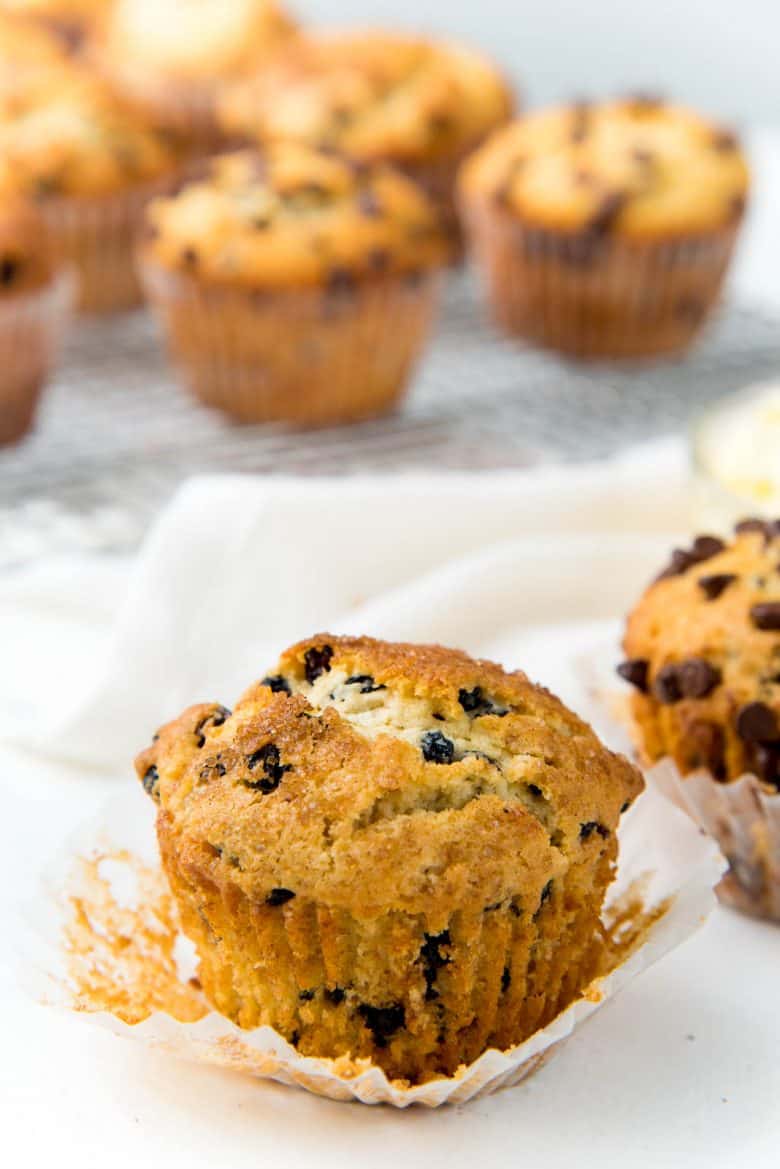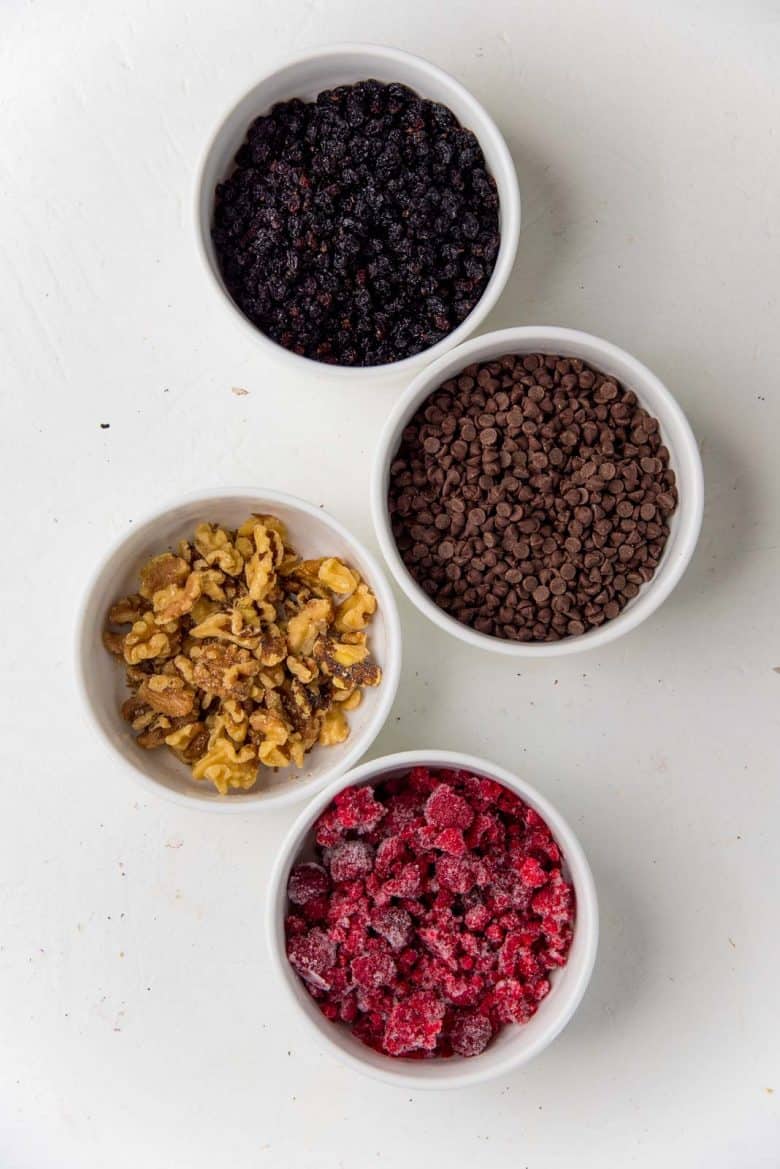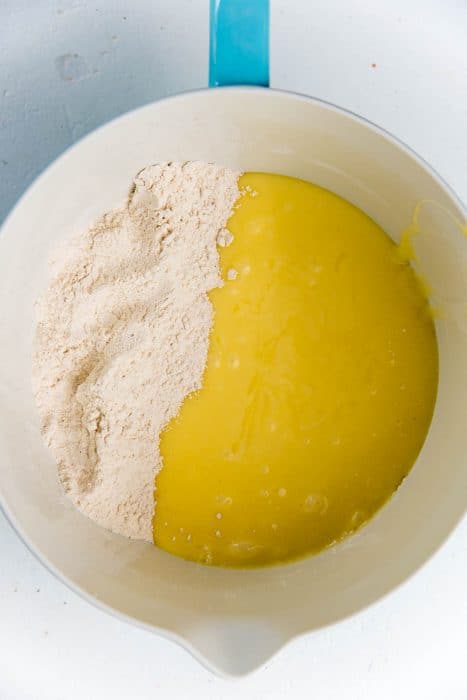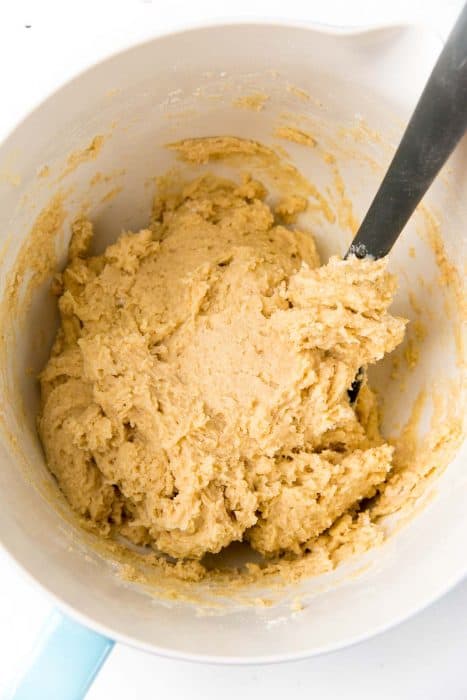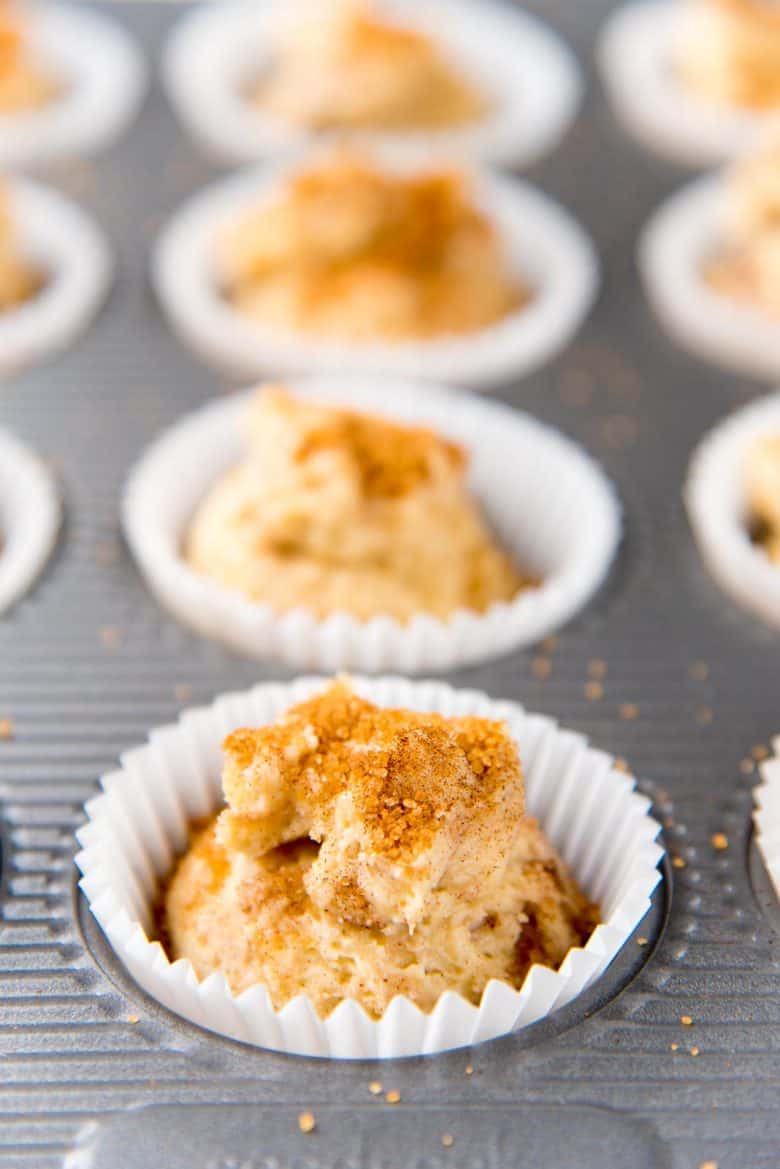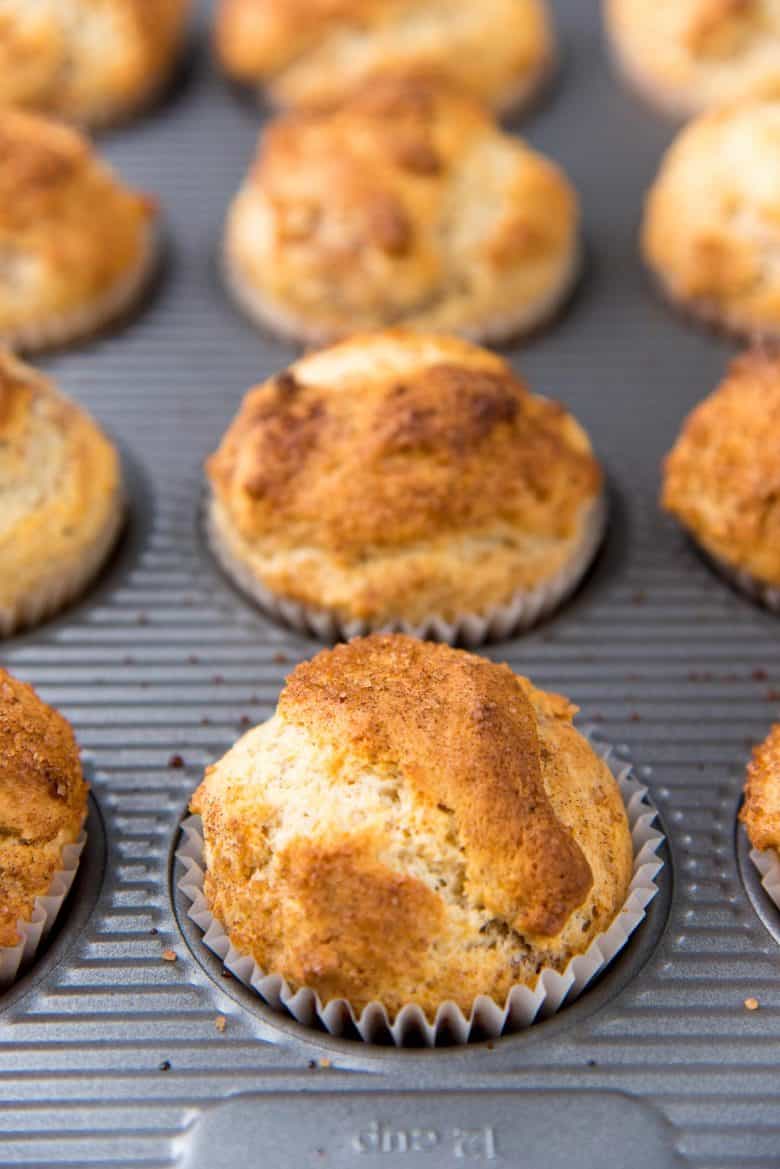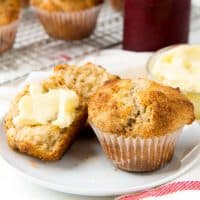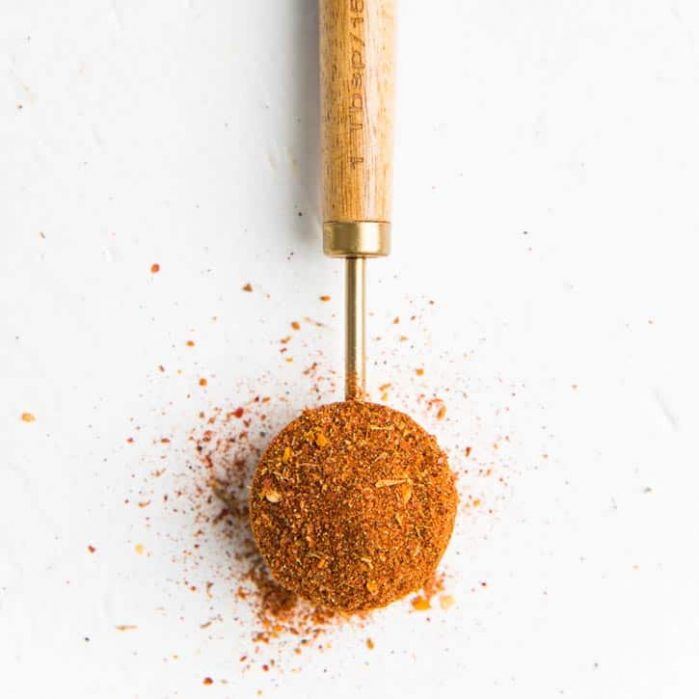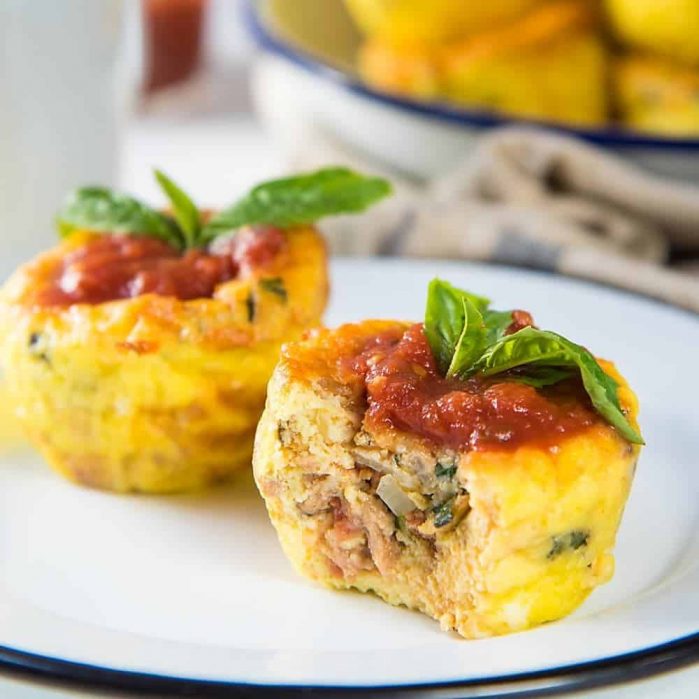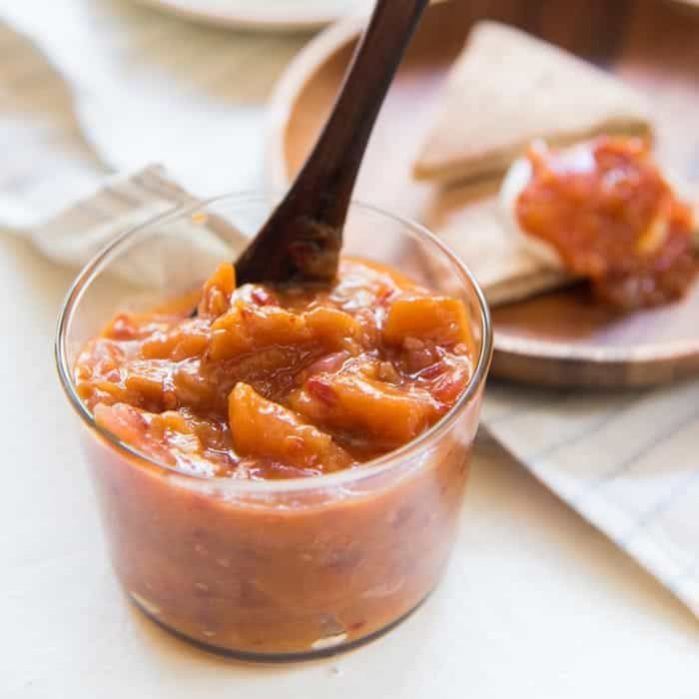A fantastic basic muffin recipe with variations.
What are muffins?
Muffins are a type of quick bread, similar to classic banana bread, whole wheat banana bread etc. And true to that name, they are quick and easy to make. The texture is somewhere between that of a cake and a bread – not so soft like a cake, but not as firm as bread. In other words, they have the texture of cake, but are as sturdy as bread.
What makes muffins special?
They are perfect to split in half and enjoy with a nice pat of butter, because they are sturdier than a cupcake. Remains moist inside. Not chewy like bread. Quick and easy to make. Can be sweet or savory (limitless potential!).
Why this basic muffin recipe is the best base recipe
You can make these in under 30 minutes! They have the perfect, delicious balance between cupcake and bread. Really moist inside, but also sturdy. Easy and fast breakfast to make fresh, or ahead of time. Can be baked and frozen for later. Can be adapted to be dairy-free or vegan. This is a great basic muffin recipe with variations that your whole family will love! Lots of flavors with one base recipe. See my blueberry muffins with streusel topping recipe for another classic flavor variation.
I’ve been making muffins for as long as I can remember. But my first attempts were pretty flat and boring. The first time I tried making blueberry muffins, I ended up with something green, that was too rubbery. But the more I practiced, the more tips and tricks I picked up along the way, and I’m going to share all that with you guys today!
How to make muffins
Creaming method
Some recipes online use the “creaming method”, where butter and sugar are mixed until light and fluffy, before adding other ingredients. This method isn’t traditionally used to make muffins. It gives muffins a more cake-like texture.
Melting method (muffin method)
This is the most common way to make muffin recipes. This is actually called “the muffin method”, so no surprise there. You melt the butter to a liquid and mix all the other wet ingredients, and then add that to the dry ingredients for the basic muffin recipe. This method is much quicker and easier. But there is a risk of over-mixing the muffin batter and making your muffins come out rubbery (because of gluten).
The Stella Parks method
I love Stella! Her method of making muffins is genius, but involves an extra step. She mixes the flour + other dry ingredients (including sugar) with butter until it’s mealy (has the texture of coarse sand). You can use a food processor or a hand / stand mixer to do this. Then she stirs in the rest of the wet ingredients. The coating of flour with the fat from butter reduces gluten development when you stir in the wet ingredients. So this reduces the likelihood of rubbery muffins. But mixing the flour and butter is an extra step. Plus it uses an extra kitchen equipment (mixer) that you don’t need to make perfect muffins.
Here’s the method that I use to make muffins
I like the melting method. It’s fuss-free, easy, and I only need to really dirty up 2 bowls – one for dry ingredients, and another for wet ingredients. It’s perfect to make one batch of the basic muffin recipe. For this, I like the Stella Parks method. Whether it’s only one flavor, or I’m making the basic muffin base recipe but adding different flavors, this method is great to prevent the batter from becoming too tough and rubbery. A good muffin is made when the batter is mixed lightly, but quickly. The more effort and time you put into mixing muffin batter, the more rubbery the texture becomes because of too much gluten development. So if you’re making multiple batches or multiple flavors, you will likely end up mixing the dry ingredients for a longer time, with additional mixing time for when you divide and add flavors to the batter. Coating the flour with the fat will slow down gluten formation, allowing the batter to withstand some extra mixing time. In this post I’ll cover both methods of making muffins so you can choose whichever one you like.
If you’re only making 1 batch of 1 flavor – use the melting method or the muffin method. If you’re making a larger batch, or multiple flavors – use the Stella Parks method.
I’ll also be sharing my absolute favorite base recipe for muffins. This recipe makes the most amazing muffins! They’re sturdy and moist, and incredibly delicious. You can heat it up to make it soft and fluffy, or eat it at room temperature for a more substantial muffin. Plus you can adapt the base recipe to add lots of flavors. Here are some great muffin flavor variations.
How to make the basic muffin recipe
Melting method (muffin method) –
This easy method of making muffins involves combining wet ingredients with the dry ingredients. With this method, the following ingredients are classed as wet ingredients.
Melted butter (or oil, or margarine) Sugar (white sugar / brown sugar / honey) Eggs Flavoring liquids (extracts etc.) Milk / buttermilk / sour cream / cream etc.
Sugar is considered a wet ingredient for muffins because sugar is hygroscopic. Meaning, it retains and attracts water, which is why sugar can easily become sticky or clumpy when exposed to air for prolonged periods of time. Dry ingredients here include,
Flour Baking powder Salt Spices
Here are some other additions that can be added to the dry ingredients,
Chocolate chips Fruits (like blueberries, raspberries, raisins, or chopped fruits like apple) Dried fruits (like raisins, dates, apricots etc.) Nuts
This method of making muffins is easy and straightforward. See? EASY PEASY!
Stella Park’s method –
Tips on how to make muffins at home (basic muffin recipe or any muffin recipe)
Make sure all the ingredients are at room temperature. Use a large, separate bowl for the dry ingredients, as you will be mixing the batter in this. It’s obviously easier to mix efficiently in a larger bowl. When you add the wet ingredients to the dry ingredients, mix as little as possible. Gently fold the dry and wet ingredients (although the Stella Parks method can withstand a little extra mixing). When you have this base recipe down, adapting it for variations is easy. Use a regular muffin pan for regular muffins, but you can also use a mini muffin pan or a jumbo muffin pan too. The cooking time will vary depending on the pan you use, of course. For a regular muffin pan, I use a little over 1/4 cup of batter (about 5 tbsp). Line the muffin pan for easy clean up. IF you don’t want to add muffin liners, you can grease the tin with butter (my preference) or cooking spray to make it non-stick as well.
So there you have it. Two methods of making basic muffins! It’s such an easy recipe, and perfect for breakfasts. Since you can whip up a batch in less than 30 minutes (including baking time), there’s really no excuse to not make this basic muffin recipe with variations! 🙂
If you like this recipe, you may also like,
Homemade pancake mix Sheet pan pancakes Cream scones Lavender blueberry scones Cheddar corn biscuits
